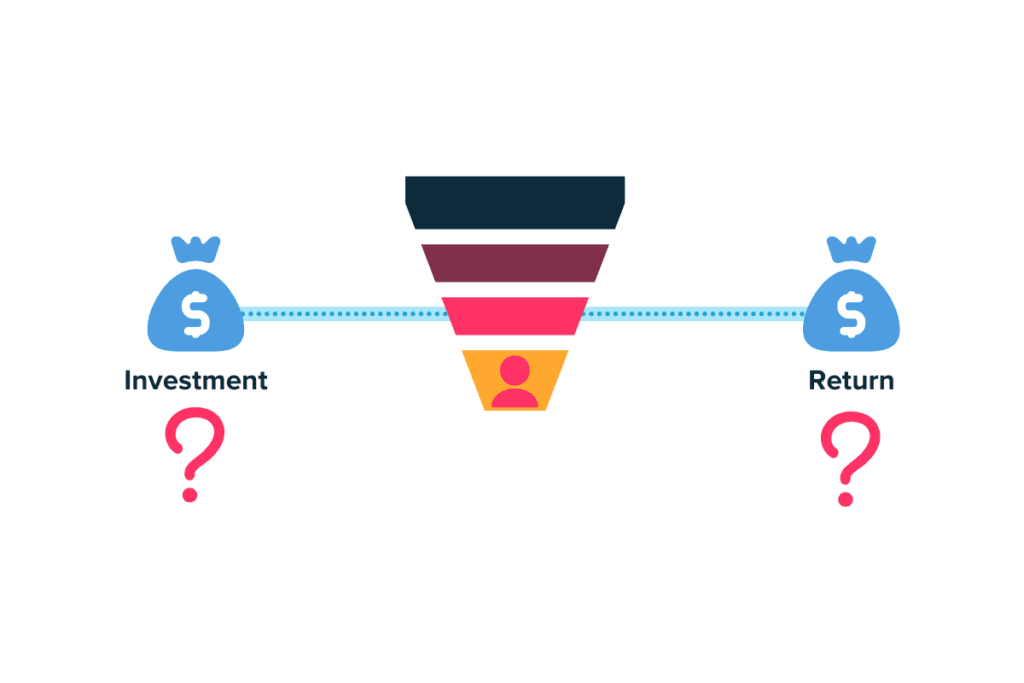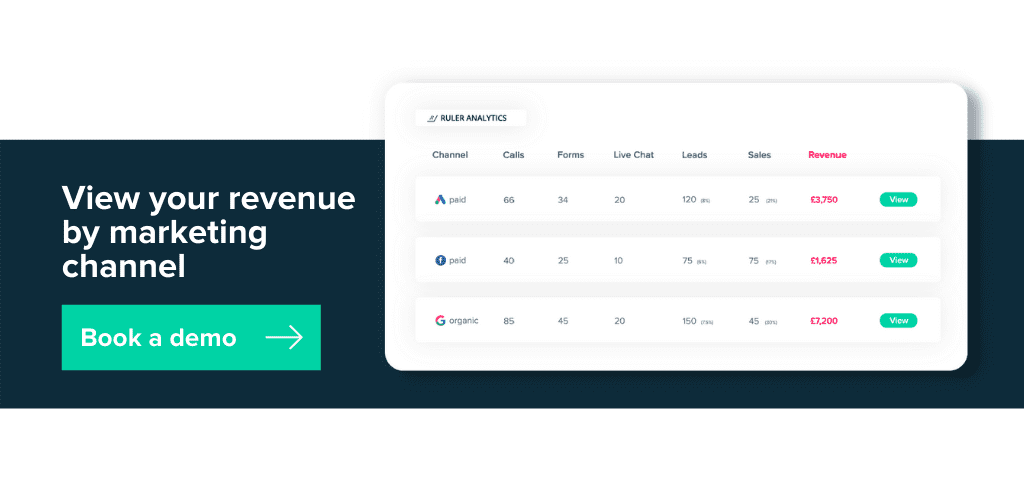Your marketing return on investment is a key metric when trying to determine if your marketing is helping to drive profits for your business. We explore what marketing ROI is and how you can track and calculate it.
Marketers know that to improve and grow, you need to have a good understanding of what’s working and what isn’t. Marketing return on investment is a key metric when it comes to determining your success.
We found that 60% of marketers are confident they prove marketing ROI, but just 23% of marketers are confident that they’re tracking the right KPIs.
Related: Read the full report on key marketing activity and challenges
What are the stumbling blocks in the way of marketers calculating their ROI? Keep reading to learn:
Let’s get started.
Marketing ROI, or marketing return on investment, is a key metric to determine how much return you get from marketing investments you make.
For example, you set live a PPC campaign and it costs £500. You want to know how many sales you created on the back of this £500 investment.
Related: Key metrics you need to track to understand marketing ROI
The more sales you make, the more successful the campaign is. Marketing ROI helps you understand just how many sales and how much revenue you’re driving through marketing.
Calculating return on investment is easy. All you need to do is subtract your marketing cost from your sales. You then divide that figure by your marketing cost.
(Sales Growth – Marketing Cost) / Marketing Cost = ROI

This calculation can be applied to all of your marketing, or you can break it down by channel or even campaign to understand your ROI on a holistic or individual basis.
Related: Marketing ROI tools you need to check out
Proving your ROI is a key challenge for marketers. In fact, we found that 31% of marketers find proving ROI to be one of their biggest challenges.
Related: Read the key challenges marketers are facing in 2021
There are a few key factors why marketing ROI is so difficult to track. We’ve broken it down to four main reasons:
This is a key one. Your lead and marketing data is out there. But, it’s disconnected. And it’s disconnected at every stage.
Take this example. A user engages with your website a number of times before they convert via a form fill.
While you might be tracking the form fill, how do you connect that lead conversion to the rest of their customer journey?
And then, when that lead converts into a sale, how do you connect that closed revenue to the full customer journey too?
💡 Pro Tip
Want to learn how you can better track your leads and generate more high-quality leads? Download our complete guide to lead tracking, or get started with our blog on tracking leads.
While you might be able to track conversions like forms, what about more tricky-to-track conversion types like phone calls?
Google Ads’ call tracking isn’t enough.
And without proper call tracking, or proper conversion tracking for that matter, you’re never going to be able to get a true marketing ROI.
🚀 Pro Tip
Want to better understand the role offline conversions play in your customer journey? Download our guide to offline conversion tracking and start getting a full view of your ROI.
Let’s say you were already tracking conversions and you could see which channel caused that conversion.
That’s a great start to getting an accurate marketing ROI. But how often do customers land on your website and convert right away? When you need to generate leads, very rarely. They’ll likely have had some exposure to your business already.
But, with long sales cycles meaning you can’t track conversions as they’re out of regular attribution windows, and a missing view of full customer journeys, your perception of how your marketing is functioning is wrong.
Related post: How to shorten your long sales cycles
A user could visit your website for the first time via a PPC advert and then engage with you 50 more times.
Then, they could wait six months before returning to your site directly and converting.
Without the right tools in place, you’d attribute this sale to direct. But we know that isn’t accurate.
To find out our true marketing ROI, you need to be able to track your leads from marketing to sales.
Normally, marketing generates leads and throws them over the wall to sales.
It leaves sales missing key data about their new leads.
And, it leaves marketing missing data on how their efforts are working to drive low or high-quality leads that are resulting in revenue.

The missing link is marketing attribution.
Related: Complete guide to marketing attribution
Marketing attribution is a way to track each and every lead, and, each and every touchpoint. It means you can get full visibility of your leads and their interactions with your content. Finally.
Ruler uses a closed-loop model that allows your team to quit reporting on clicks and conversions, and start reporting on what matters the most to your business: revenue.
How does it work? It’s simple.
Ruler Analytics tracks anonymous visitors to your website over multiple sessions, sources and keywords.

When a user converts into a lead, whether that be via phone call, form or live enquiry, Ruler Analytics will integrate with your chosen CRM (or wherever you’re storing your lead data) and fire the relevant data over.
Once the deal or sale closes into revenue, Ruler Analytics passes the monetary information back to your marketing analytics tools, like Google Analytics and ad platforms so you can report on real sales and revenue.
It’s this framework that simplifies the process when it comes to calculating the return on investment of your marketing efforts.
Using a tool like Ruler, you can map your entire customer journey, track every lead and touchpoint and definitively prove your ROI.
Find out more about getting started with marketing attribution and book a demo with the team. We’ll show you how to prove your return on investment right in our dashboard.
Or, if you prefer, how to push our data into your preferred marketing analytics software.
